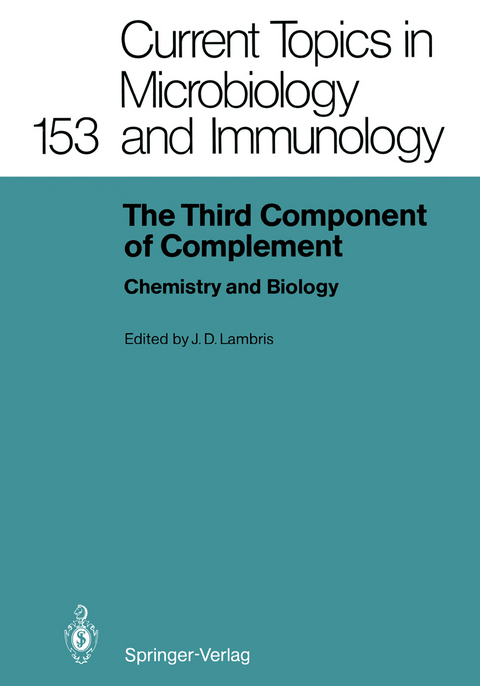
The Third Component of Complement
Chemistry and Biology
Seiten
2011
|
1. Softcover reprint of the original 1st ed. 1990
Springer Berlin (Verlag)
978-3-642-74979-7 (ISBN)
Springer Berlin (Verlag)
978-3-642-74979-7 (ISBN)
The third component of complement, C3, is one of the most versatile proteins and an important participant in immune surveillance and immune response pathways. Its multifunctio nality is based on its ability to interact specifically with multiple serum complement proteins, cell surface receptors, and mem brant;-associated regulatory proteins. One of its most intriguing strategies of interaction with cell surfaces is the covalent binding of activated C3 through the internal thioester. The field has expanded over the past 10 years and a wealth of information has accumulated. C3 from various species and many of the human C3 binding proteins have been cloned and expressed. Numerous cellular responses mediated by the diffe rent fragments of C3 have been described. The findings that C3 interacts in a ligand-receptor-like fashion with proteins of nonself origin such as the gC of herpes simplex virus, a 70-kDa protein from Candida albicans, proteins from Epstein-Barr virus, etc. has opened a new field of investigation. The papers assembled in this volume summarize the wealth of data on the various aspects of the C3 interactions; together they bring to the reader new information on the chemistry, molecular gene tics, biology, and pathophysiology of C3 and C3-binding proteins. Emphasis is given to structural features as they relate to functions. Spring 1989 JOHN D. LAMBRIS, HANS J. MULLER-EBERHARD Table of Contents J. E. VOLANAKIS: Participation of C3 and Its Ligands in Complement Activation . . . . . . . . . . . 1 S. R. BARNUM, G. FEY, and B. F. TACK: Biosynthesis and Genetics of C3 . . . . . . . . . . . . .
Participation of C3 and Its Ligands in Complement Activation.- Biosynthesis and Genetics of C3.- Molecular Aspects of C3 Interactions and Structural/Functional Analysis of C3 from Different Species.- The Thioester Bond of C3.- Complement Receptor Type 1 (C3b/C4b Receptor; CD35) and Complement Receptor Type 2 (C3d/Epstein-Barr Virus Receptor; CD21).- The Leukocyte Cell Surface Receptor(s) for the iC3b Product of Complement.- Decay-Accelerating Factor and Membrane Cofactor Protein.- Factor H.- C3 Binding Proteins of Foreign Origin.- Structure and Function of C3a Anaphylatoxin.- Molecular Modeling of C3 and Its Ligands.- C3 Deficiencies.- Structural and Functional Analysis of C3 Using Monoclonal Antibodies.
| Erscheint lt. Verlag | 22.11.2011 |
|---|---|
| Reihe/Serie | Current Topics in Microbiology and Immunology |
| Zusatzinfo | IX, 251 p. 10 illus. |
| Verlagsort | Berlin |
| Sprache | englisch |
| Maße | 170 x 242 mm |
| Gewicht | 457 g |
| Themenwelt | Medizin / Pharmazie ► Medizinische Fachgebiete ► Dermatologie |
| Schlagworte | Biochemie • Biomedizinische Forschung • leukocyte • Molekularbiologie • pathophysiology • Physiology • proteins • Zellbiologie |
| ISBN-10 | 3-642-74979-8 / 3642749798 |
| ISBN-13 | 978-3-642-74979-7 / 9783642749797 |
| Zustand | Neuware |
| Haben Sie eine Frage zum Produkt? |
Mehr entdecken
aus dem Bereich
aus dem Bereich
Differentialdiagnostik und Therapie bei Kindern und Jugendlichen
Buch (2022)
Thieme (Verlag)
CHF 191,00
Allergene - Diagnostik - Therapie
Buch (2022)
Thieme (Verlag)
CHF 249,00
richtig verschreiben – individuell therapieren
Buch (2023)
Thieme (Verlag)
CHF 99,40


